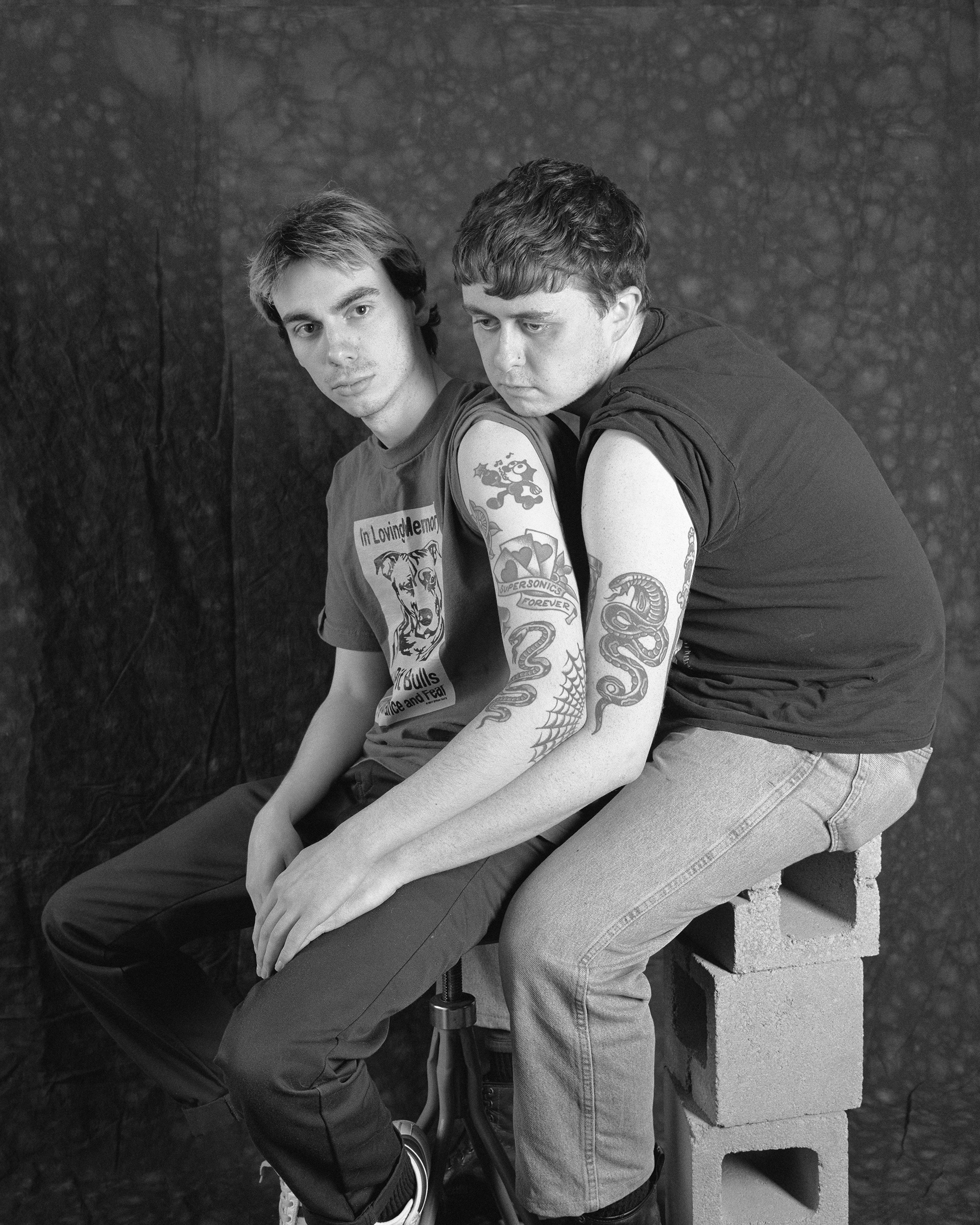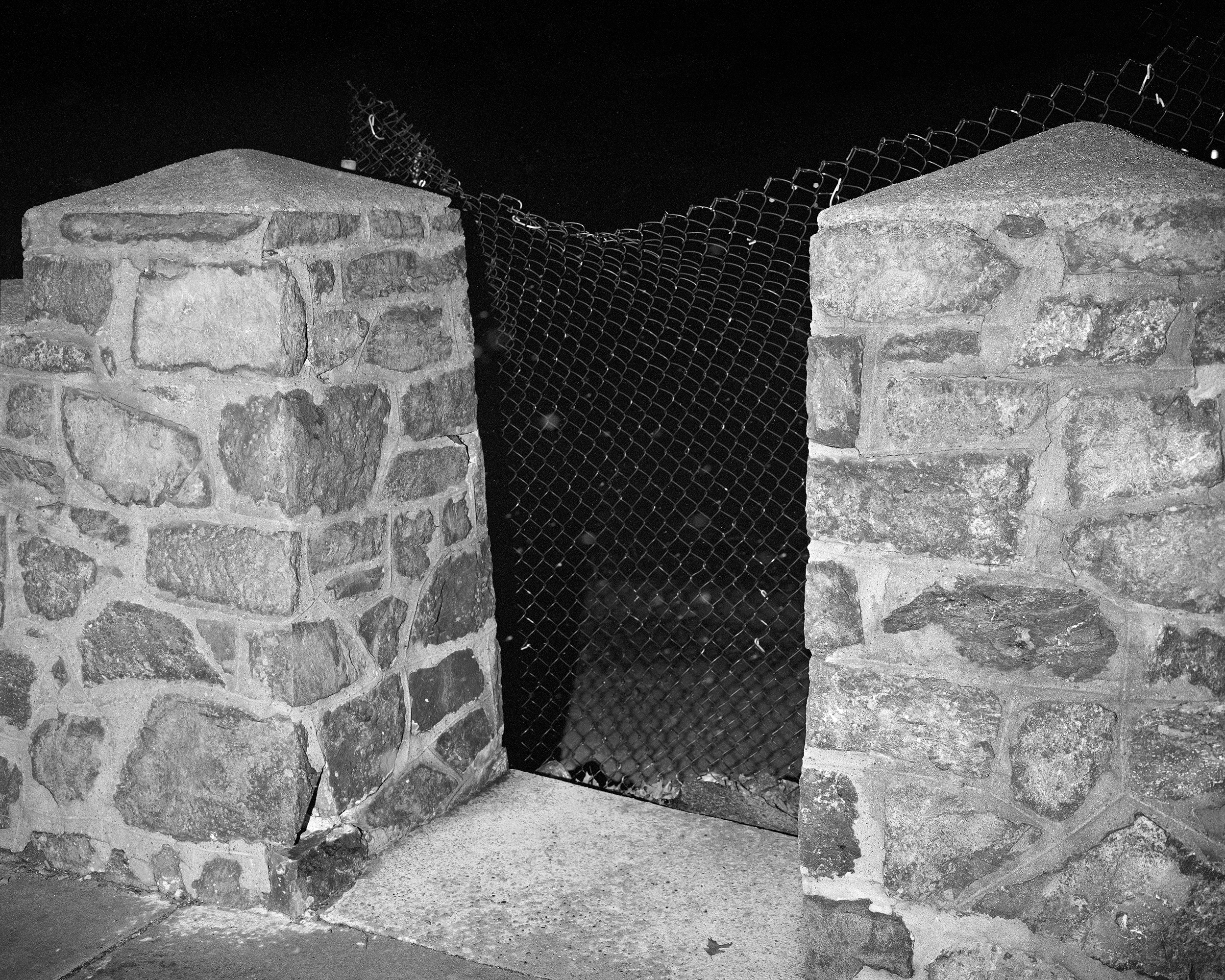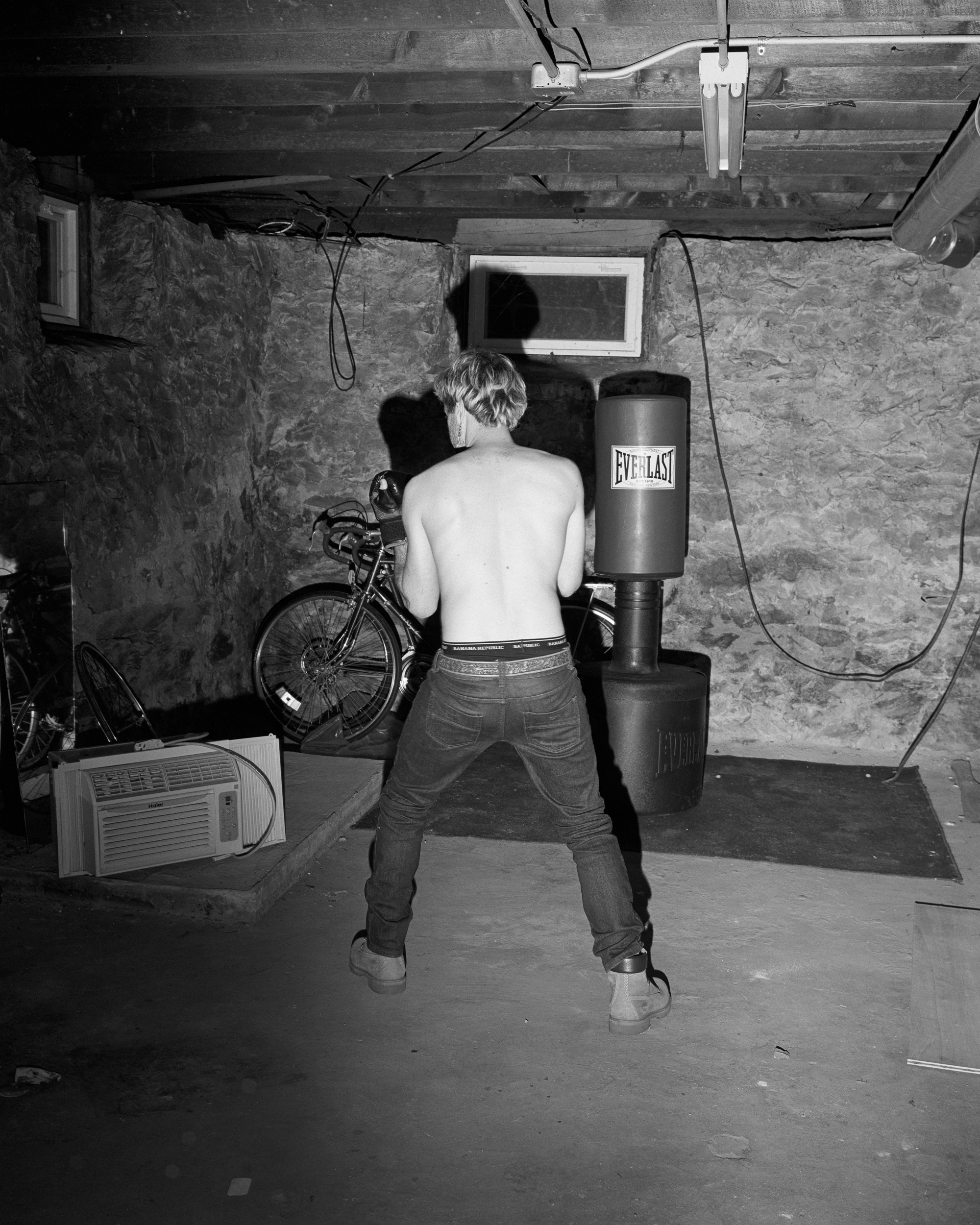
-
Tyler Healey
In conversation with June T Sanders-
June T Sanders: Can you tell me how ‘boyz night’ began? Did you start with an intention or plan? Or did it grow out of intuitive shooting?
Tyler Healey: Boyz Night started in the fall of 2017, I had become really frustrated with a lot of the things I made in the past and wanted to try something different. I started doing research on the role masculinity plays in our culture, to get a broad understanding of what it was I was looking at, and how it relates to my own experience. From there I would just kind of make images that I thought somehow spoke to different ideas research brought up. This was the first time for me in a lot of ways I had the words to describe the feelings or experiences I had around this subject of manhood and the typical attributes associated.
June: So in some ways it was about exploring this relationship between you and the typical (straight) masculine experience — And maybe how you do or can or will move through those spaces, experiences or feelings. How did you go about making the images & how was it different than how you made work in the past? Did these moments present themselves to you or did you actively search for or create them?
Tyler: Yeah exactly. For image making I would just kind of wander around and shoot looking for spaces that I thought could somehow communicate the ideas I was thinking about. In most cases I would return to places I had seen earlier that day but didn’t have a camera at that moment. For the portraits I made I think I was much more intentional, thinking about the relationships I have with the men I photographed or the nuances in their masculinity I related to or was intrigued by. I think the big differences in this project was that I tried to have a loose idea of what I wanted to convey. Plus I had almost never made serious pictures of people before this, especially with the intention of including them in a project.



June: How has where you live or where you’re from affected the work you make?
Tyler: For me its tied into my queerness. When you’re young and realize your identity is considered taboo or wrong you begin to notice everything as an outsider and for a lot of people its this huge secret. Obviously things are a lot different now for me but its because of those experiences I had as a closeted queer in a small town that I am able to make this work.
June: In most of your portraits the person is turned away or fragmented or (seemingly) unaware of the camera. Did that come about naturally? Or do those choices speak to something else?
Tyler: I think the choice to show people seemingly unaware and fragmented was to further isolate them which was a large part of the experience of masculinity I have.
June: To me, these feel like very queer images. Or a queering of images. Which is one of the reasons I love them so much. But they are also open ended and quiet and fragmented enough that they almost fly under the (straight) radar – as opposed to work that is explicitly about gender or sexuality. Is that subtly something you think about? And do you find yourself in dialog with other queer photography in that way?
Tyler: I was certainly surprised (and flattered) when people would talk about my photographs as queer or in the canon of queer art. A lot of my experience making this and talking about it was with a straight audience so it was challenging at times to make being queer an apparent driving force. I think the ambiguity lends itself to the queer narrative and is a defining aspect of queerness for many. There’s definitely parallels I notice with queer photography, I was hesitant at first to say that this work is about queerness but in many ways it is and I can’ neglect that aspect. For me, what makes this in dialogue with other queer photography is that Im a queer making it.


June: Which photographers have influenced you the most in terms of style and content?
Tyler: John Edmonds, David Billet, Chris Bernsten, Eva O’Leary, Rory Mulligan, El Perez and Wolfgang Tillmans influenced me in different ways.
June: Whats next for you?
Tyler: Im still figuring that out! Trying to be a real person™️ again now that Im done with school. Trying to make stuff without the academic pressure. Hopefully putting out a little zine of photographs this winter. Hopefully moving out of my parents house before the summer.
___
Tyler Healey was born and raised in Massachusetts, where he currently lives. He went to Lesley Art + Design (formerly the Art Institute of Boston).
www.tylerhealey.com
